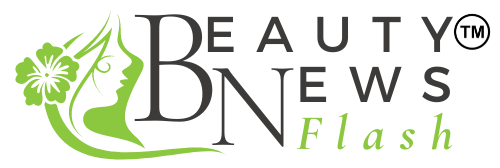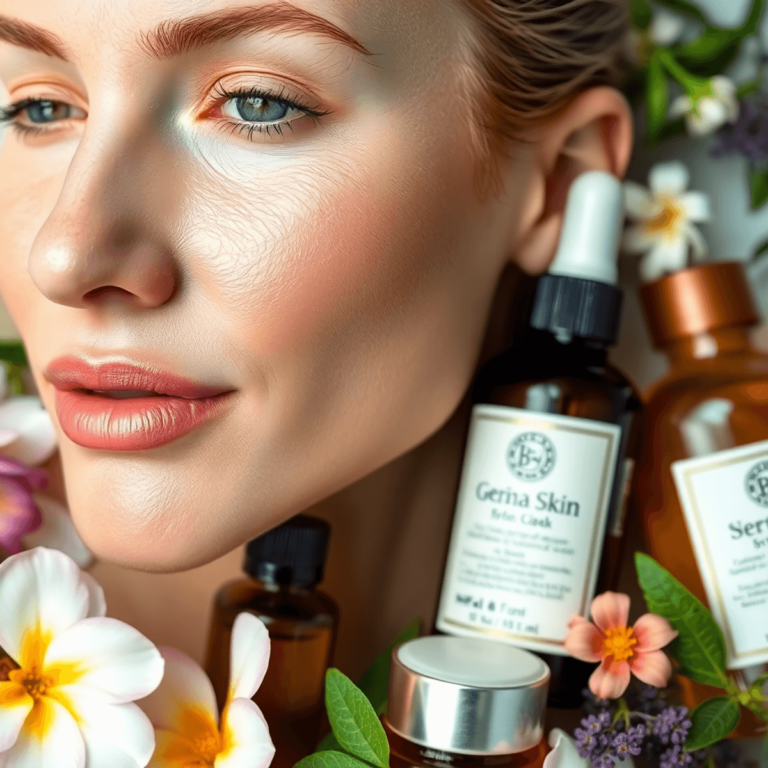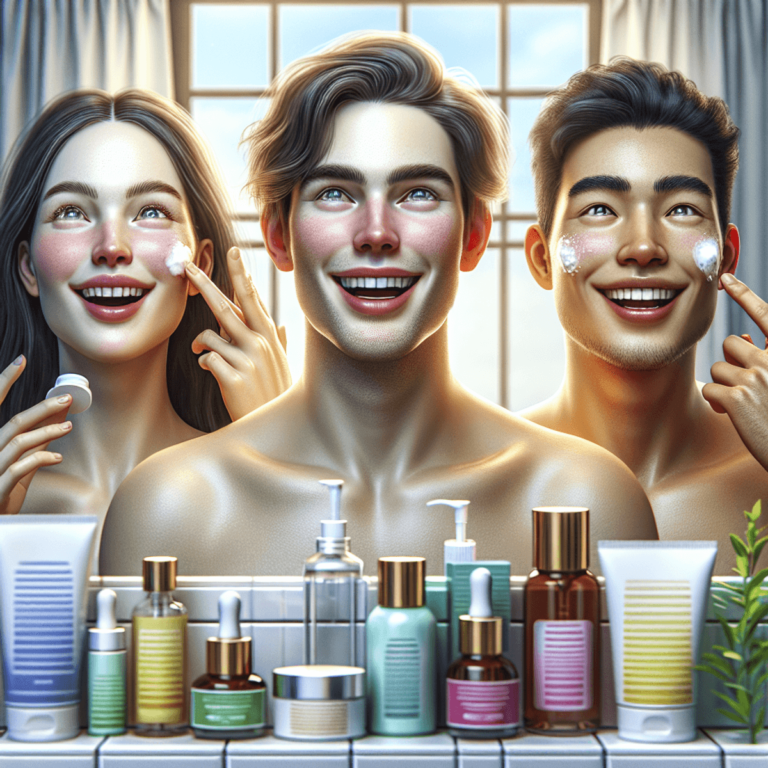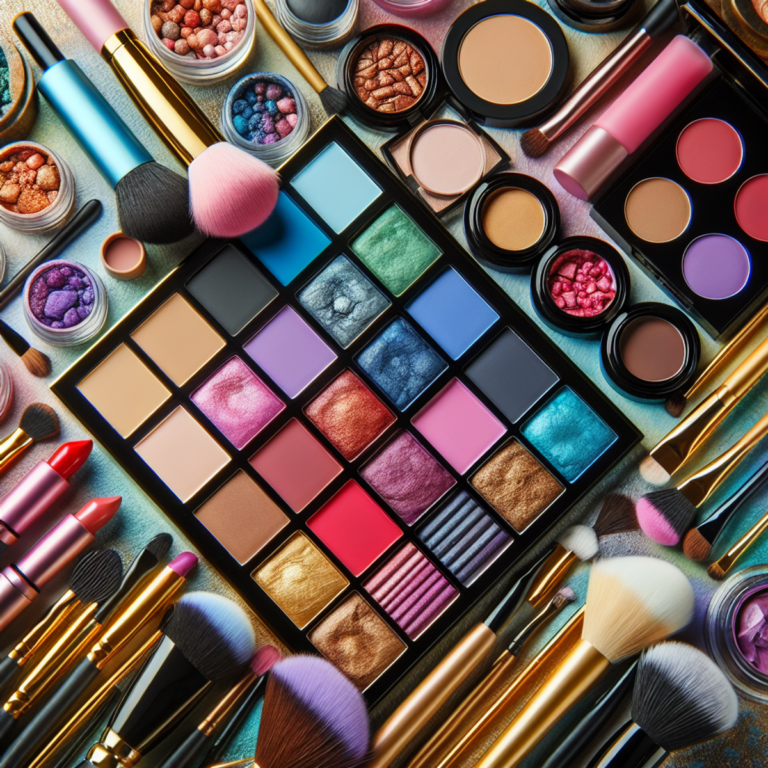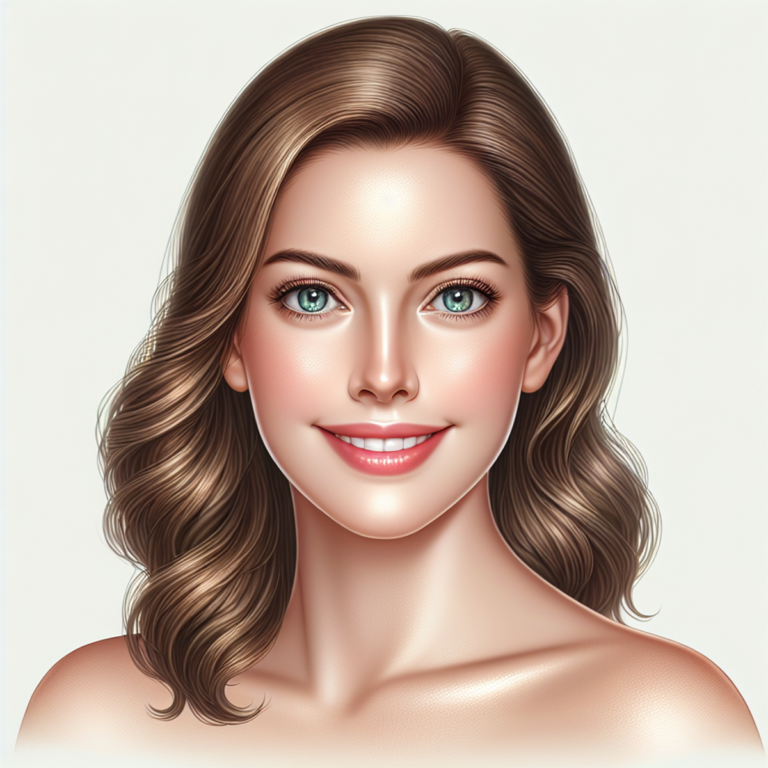Get the ultimate ebook guide to heal pimples and acne
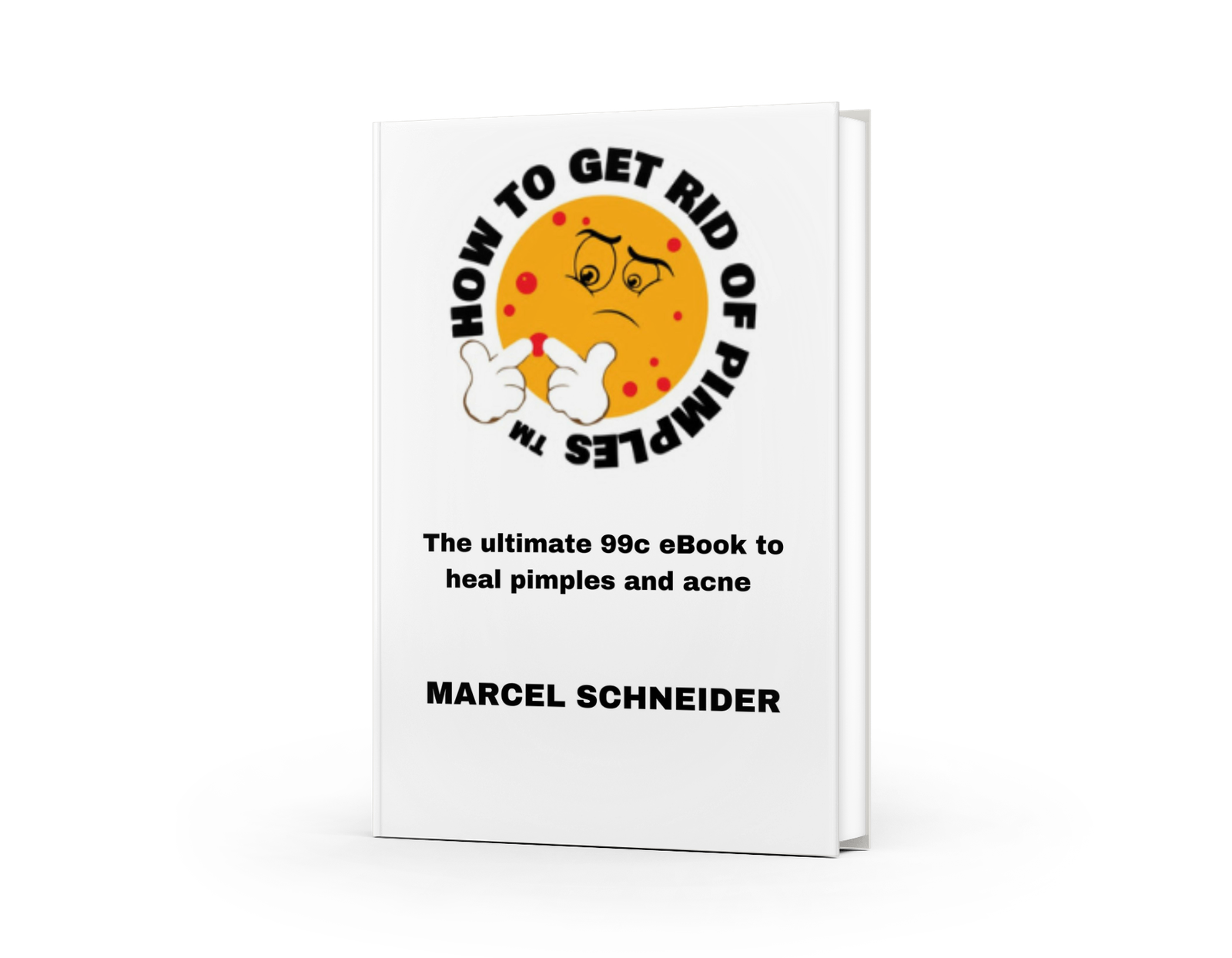
Introduction
Are you tired of dealing with stubborn pimples and acne? Look no further! Our Ultimate Ebook Guide to Heal Pimples and Acne is here to provide you with effective solutions. This comprehensive resource combines expert insights, proven strategies, and practical solutions to help you achieve the clear, healthy skin you deserve.
Your journey to clear skin requires understanding, patience, and the right approach. This guide equips you with:
- Science-backed knowledge about different types of acne and their root causes
- Customized skincare routines tailored to your specific skin type
- Natural supplement recommendations for internal healing
- Product recommendations across various price points
- Step-by-step treatment plans for active breakouts
- Prevention strategies to maintain clear skin long-term
You’ll discover how to identify your acne triggers, select appropriate skincare products, and implement effective treatment methods. Whether you’re dealing with occasional breakouts or chronic acne, this guide provides actionable steps to transform your skin.
The path to clear skin isn’t one-size-fits-all. This guide helps you create a personalized approach by combining proven treatments, lifestyle adjustments, and skincare techniques. You’ll learn to make informed decisions about your skin health while avoiding common mistakes that might worsen your acne.
Ready to start your transformation? Let’s dive into understanding the science behind acne and build your path to clear, confident skin.
Understanding Acne
Acne comes in different forms, each with its own characteristics and treatment requirements. Here’s a breakdown of the main types you might come across:
Common Types of Acne:
- Blackheads: Open comedones that appear dark due to oxidation
- Whiteheads: Closed comedones that remain beneath the skin’s surface
- Papules: Small, red, tender bumps
- Pustules: Pimples containing pus
- Cystic Acne: Deep, painful inflammations beneath the skin
Your skin has sebaceous glands that produce oil (sebum) to keep it moisturized. When these glands produce too much oil, it mixes with dead skin cells and bacteria, causing clogged pores and breakouts.
Hormonal Acne Explained
Hormonal acne usually shows up on your:
- Jawline
- Chin
- Lower cheeks
- Neck
These breakouts often coincide with hormonal changes during:
- Menstrual cycles
- Puberty
- Pregnancy
- Menopause
- Stress periods
Common Myths About Hormonal Acne
Let’s clear up some common misconceptions:
❌ “Chocolate causes acne”
Research shows no direct link between chocolate consumption and breakouts
❌ “Only teenagers get acne”
Adult acne affects up to 15% of women
❌ “Washing your face more prevents breakouts”
Over-washing can irritate skin and increase oil production
❌ “Acne is caused by poor hygiene”
Bacterial imbalances and hormonal changes are the main triggers
❌ “Spot treatments alone can cure hormonal acne”
A comprehensive skincare approach yields better results
Your hormonal acne patterns may vary based on individual factors like genetics, stress levels, and lifestyle habits. Keeping track of your breakouts alongside your menstrual cycle can help you identify patterns and triggers specific to your skin.
Natural Supplements for Skin Health
Your path to clear skin extends beyond topical treatments. Natural supplements play a crucial role in healing acne from within, targeting inflammation and supporting your skin’s repair mechanisms.
Essential Supplements for Skin Healing:
- Zinc (30-45mg daily): Acts as an anti-inflammatory agent and helps regulate oil production
- Omega-3 Fatty Acids (1000-2000mg daily): Reduces inflammation and supports skin barrier function
- Vitamin D3 (2000-5000 IU daily): Helps control inflammation and supports immune system function
- Vitamin A (5000 IU daily): Promotes skin cell turnover and reduces sebum production
- Probiotics (10-30 billion CFU daily): Balances gut health, which directly impacts skin health
Power-Packed Foods for Skin Health:
- Dark leafy greens: Rich in vitamins A, C, and E
- Fatty fish: High in omega-3s and protein
- Berries: Packed with antioxidants
- Green tea: Contains polyphenols that fight inflammation
- Seeds and nuts: Provide essential minerals and healthy fats
Antioxidant-Rich Foods to Include:
- Blueberries
- Sweet potatoes
- Pomegranates
- Dark chocolate (70% or higher)
- Spinach
Your diet significantly impacts your skin’s healing process. Incorporating these supplements and foods helps create an internal environment that supports clear, healthy skin. Many people notice improvements within 4-8 weeks of consistent supplementation combined with proper nutrition.
Pro Tip: Start with one supplement at a time to monitor how your body responds. Always consult with a healthcare provider before starting any new supplement regimen, especially if you’re taking other medications.
Remember to maintain consistent water intake – aim for 8-10 glasses daily to help flush toxins and keep your skin hydrated from within.
Skincare Routine Essentials for Acne-Prone Skin
A consistent skincare routine creates the foundation for clear, healthy skin. Your daily regimen needs specific attention to combat acne-causing bacteria while maintaining your skin’s natural barrier.
Essential Steps for Your Morning Routine:
- Gentle cleanser application
- Alcohol-free toner (optional)
- Treatment products
- Moisturizer
- Sunscreen
Evening Routine Components:
- Double cleansing method
- Treatment products
- Night moisturizer
Choosing the Right Cleanser
Your cleanser choice can make or break your skincare routine. Gentle cleansers maintain your skin’s pH balance while removing excess oil and debris.
Recommended Gentle Cleansers:
- CeraVe Foaming Facial Cleanser
- La Roche-Posay Toleriane Hydrating Cleanser
- Neutrogena Ultra Gentle Daily Cleanser
Harsh Cleansers to Avoid:
- Products containing alcohol
- Scrubs with large, rough particles
- Cleansers with synthetic fragrances
Cleansing Tips for Acne-Prone Skin:
- Use lukewarm water – hot water strips natural oils
- Limit washing to twice daily
- Pat dry with a clean towel
- Wait 60 seconds after cleansing before applying other products
Your cleansing technique matters as much as product selection. Use gentle circular motions with your fingertips rather than rough washcloths or brushes. This method prevents micro-tears in your skin that can lead to increased inflammation and breakouts.
Product Application Order:
- Water-based cleanser
- Treatment products (serums, spot treatments)
- Moisturizer
- SPF (morning only)
Remember to patch test new products on a small area of your skin for 24-48 hours before full-face application. This practice helps identify potential irritants or allergens that could trigger breakouts.
Targeted Treatments and Spot Treatments for Active Breakouts
Active breakouts need immediate attention, and targeted treatments can greatly speed up the healing process. Let’s look at proven solutions for those annoying spots.
Benzoyl Peroxide: Your Anti-Bacterial Ally
- Works by killing acne-causing bacteria
- Available in concentrations from 2.5% to 10%
- Best used as a spot treatment on active pimples
- Start with lower concentrations to minimize irritation
- Apply a thin layer directly to affected areas
Salicylic Acid: The Pore-Clearing Expert
- Penetrates deep into pores to dissolve excess oil
- Helps prevent future breakouts
- Ideal for blackheads and whiteheads
- Available in strengths from 0.5% to 2%
- Can be used daily as part of your routine
Pimple Patches: Your Quick-Fix Solution
- Hydrocolloid patches draw out pus and excess fluid
- Create an optimal healing environment
- Prevent picking and touching
- Wear overnight or during the day
- Work best on pimples with a visible white head
Application Tips for Maximum Results
- Clean and dry your skin thoroughly before applying any treatment
- Use spot treatments before moisturizer but after toner
- Don’t mix multiple active ingredients on the same spot
- Apply pimple patches to completely dry skin
- Replace patches every 6-8 hours or when they turn white
Treatment Duration Guidelines
- Benzoyl peroxide: Leave on for 2-3 minutes, then rinse (beginners)
- Salicylic acid: Can be left on overnight
- Pimple patches: Wear until the patch turns white
- Stop use if irritation occurs
- Allow 24-48 hours to see initial results
Remember to patch test new products on a small area first. Your skin might need time to adjust to active ingredients, so introduce them gradually into your routine.
Moisturizers, Sunscreen, and Facial Oils: Balancing Hydration with Acne Control
Your skin needs moisture – yes, even when you’re battling acne. Many acne treatments can strip your skin’s natural oils, leading to a damaged moisture barrier. This triggers your skin to produce more oil to compensate, creating a cycle of breakouts.
Signs Your Skin Needs More Hydration:
- Tight, uncomfortable feeling after cleansing
- Flaky patches
- Increased oil production
- Redness and sensitivity
- Makeup appears patchy
The key lies in selecting non-comedogenic moisturizers designed specifically for acne-prone skin. These products deliver essential hydration without clogging your pores.
Best Moisturizer Ingredients for Acne-Prone Skin:
- Hyaluronic acid – draws moisture into skin
- Niacinamide – regulates oil production
- Ceramides – strengthens skin barrier
- Glycerin – hydrates without heaviness
- Aloe vera – soothes inflammation
When choosing facial oils, opt for lightweight options with a low comedogenic rating. Jojoba oil mimics your skin’s natural sebum, while rosehip oil provides hydration and helps fade acne scars.
Recommended Application Tips:
- Apply moisturizer to damp skin
- Use gentle, upward motions
- Wait 2-3 minutes between skincare layers
- Start with a pea-sized amount
- Apply twice daily, morning and night
For daytime moisture, look for products containing SPF 30 or higher. The CeraVe AM Facial Moisturizing Lotion combines hydrating ingredients with broad-spectrum protection, making it ideal for acne-prone skin.
Gel-based moisturizers work exceptionally well for oily skin types. The Neutrogena Hydro Boost Water Gel provides lasting hydration without leaving a greasy residue. For combination skin, try layering a lightweight serum under your moisturizer to target different areas’ needs.
Remember to patch test new products on your jawline for 24-48 hours before applying them to your entire face. This helps
Sun Protection Strategies During Acne Treatment Journeys
Sunscreen acts as your skin’s shield during acne treatment. Post-inflammatory hyperpigmentation (PIH) – those stubborn dark spots left behind after pimples heal – becomes significantly worse with sun exposure. Your skin needs extra protection, especially when using acne treatments that increase sun sensitivity.
Key Benefits of Daily Sunscreen Use:
- Prevents dark spots from becoming more prominent
- Protects healing skin from UV damage
- Reduces risk of scarring
- Maintains effectiveness of acne treatments
Choosing the Right Sunscreen for Acne-Prone Skin:
Look for these essential features:
- Broad-spectrum protection (UVA/UVB)
- Minimum SPF 30
- Non-comedogenic formula
- Oil-free or lightweight texture
- Water-resistant properties
Application Tips for Maximum Protection:
- Apply a quarter-sized amount for full face coverage
- Reapply every 2 hours during sun exposure
- Layer sunscreen as the last step in your morning routine
- Wait 15 minutes before sun exposure
Physical (mineral) sunscreens containing zinc oxide or titanium dioxide work well for sensitive, acne-prone skin. These ingredients provide natural anti-inflammatory benefits while protecting your skin. For those with oily skin, gel-based or mattifying formulas help control shine throughout the day.
Remember to patch test new sunscreens on a small area of your face for 24-48 hours. This practice helps identify potential triggers for breakouts or irritation before applying the product to your entire face.
Affordability and Accessibility in Skincare Solutions
Effective skincare doesn’t require expensive products. Many budget-friendly options deliver remarkable results for acne-prone skin. You can build a complete skincare routine with products under $15 each.
Affordable Cleansers
- CeraVe Foaming Facial Cleanser ($12)
- The Ordinary Squalane Cleanser ($8)
- Simple Kind to Skin Facial Wash ($7)
Budget-Friendly Treatments
- The Inkey List Salicylic Acid Cleanser ($10)
- The Ordinary Niacinamide 10% + Zinc 1% ($6)
- La Roche-Posay Effaclar Duo ($15)
Cost-Effective Moisturizers
- Neutrogena Hydro Boost Water Gel ($14)
- CeraVe Daily Moisturizing Lotion ($12)
- Versed Dew Point Moisturizing Gel-Cream ($15)
Local drugstores stock these affordable options, making them easily accessible. Many brands offer travel-sized versions, letting you test products without committing to full-size purchases.
Generic store brands often contain similar active ingredients to high-end products. Reading ingredient lists helps identify effective formulations regardless of price point.
Several retailers offer loyalty programs and regular sales on skincare items. Signing up for store newsletters provides access to exclusive discounts and promotional offers. Bulk buying during sales reduces long-term costs.
Online marketplaces feature competitive pricing and direct-to-consumer brands cut out middleman costs. This accessibility allows you to maintain a consistent skincare routine without straining your budget.
Conclusion: Your Clear Skin Journey Starts Here!
Your path to clear, healthy skin is a unique journey that combines science-backed strategies with personalized care. This ultimate ebook guide equips you with proven methods to heal pimples and acne while respecting your skin’s individual needs.
Remember these key principles for your clear skin journey:
- Listen to Your Skin: Your skin communicates its needs – pay attention to how it responds to different products and treatments
- Stay Consistent: Results come from dedication to your chosen skincare routine
- Embrace Holistic Care: Combine effective skincare products with proper nutrition, stress management, and adequate sleep
- Seek Expert Help: Don’t hesitate to consult dermatologists when needed – they’re valuable partners in your journey
The strategies shared in this guide offer a solid foundation for achieving clearer skin. Start with gentle, affordable products and gradually build your routine. Track your progress with photos and notes to understand what works best for you.
Your clear skin transformation begins now. Armed with knowledge about effective treatments, proper skincare routines, and lifestyle adjustments, you’re ready to take control of your skin health. Trust the process, stay patient, and celebrate small victories along your path to clearer, healthier skin.
FAQs (Frequently Asked Questions)
What is the ultimate ebook guide to heal pimples and acne?
The ultimate ebook guide to heal pimples and acne is a comprehensive resource that provides readers with effective strategies and insights into treating acne. It covers various topics, including understanding different types of acne, natural supplements for skin health, skincare routines, targeted treatments, and more to help individuals on their clear skin journey.
What types of acne are discussed in the guide?
The guide discusses various forms of acne, including hormonal acne, cystic acne, as well as common types like pimples, blackheads, and whiteheads. It also addresses the triggers for hormonal acne and dispels common myths that may hinder effective treatment.
How can natural supplements aid in skin health?
Natural supplements such as zinc and omega-3 fatty acids play a crucial role in reducing inflammation and promoting cell repair. The guide emphasizes the importance of maintaining a balanced diet rich in antioxidants and anti-inflammatory foods to support overall skin health.
What should an effective skincare routine for acne-prone skin include?
An effective skincare routine for acne-prone skin should include consistent cleansing with suitable products tailored to individual skin types. The guide recommends using gentle cleansers over harsh ones and provides popular product recommendations to help maintain clear skin.
What are some recommended treatments for active breakouts?
The guide highlights over-the-counter treatments like benzoyl peroxide and salicylic acid as effective options for reducing active breakouts. Additionally, it discusses how pimple patches can serve as convenient spot treatment solutions when time is limited.
Why is sun protection important during acne treatment?
Sun protection is vital during acne treatment because it helps prevent post-inflammatory hyperpigmentation (dark spots) from forming after breakouts heal. The guide advises choosing a broad-spectrum sunscreen with at least SPF 30 that is non-comedogenic to avoid causing further breakouts.
